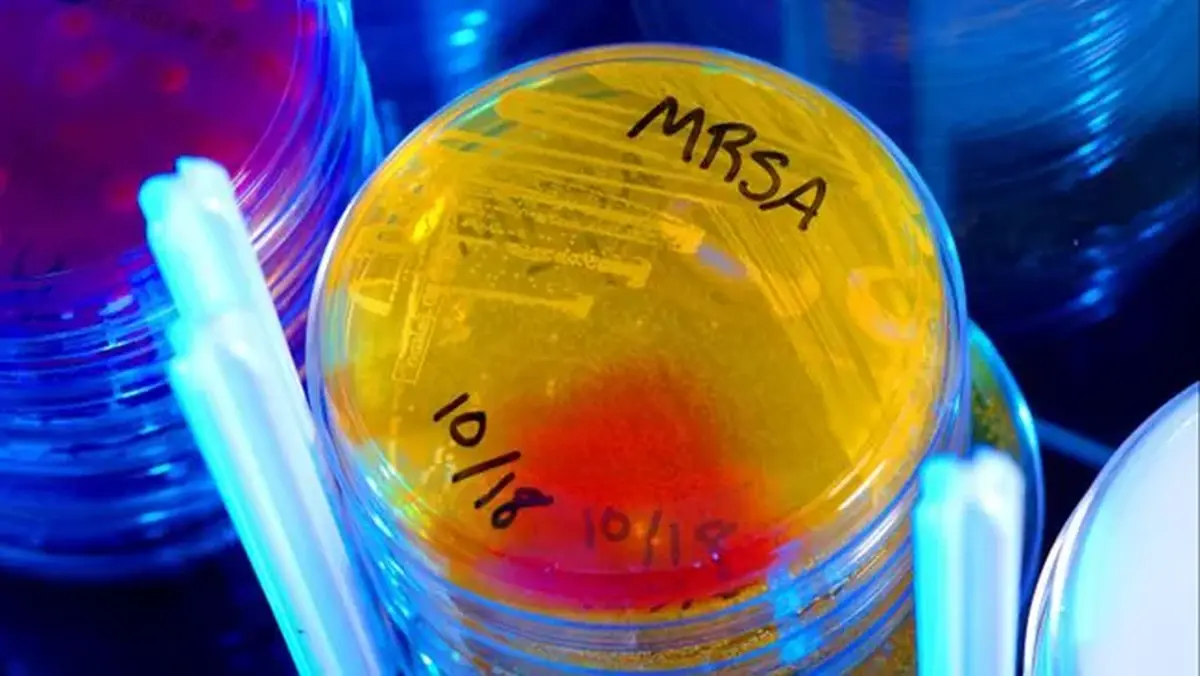 A team of chemists from the University of Warwick in the UK has announced the discovery of the first representative of a new class of antibiotics. This finding came as a surprise to the researchers, as they were not aiming to develop new medications. The new antibiotic molecule, named pre-methylenomycin C lactone, was first reported by the Journal of the American Chemical Society.
A team of chemists from the University of Warwick in the UK has announced the discovery of the first representative of a new class of antibiotics. This finding came as a surprise to the researchers, as they were not aiming to develop new medications. The new antibiotic molecule, named pre-methylenomycin C lactone, was first reported by the Journal of the American Chemical Society.
The new antibiotic has shown remarkable results in treating resistant infections, including MRSA—methicillin-resistant Staphylococcus aureus—as well as Enterococcus faecium, which causes resistant infections in hospitalized patients.
What else is known about this important discovery?
The team did not set out to discover . During their research, the scientists were studying how the well-known antibiotic methylenomycin A is synthesized by the soil bacterium Streptomyces coelicolor. Leading authors of the study, Lona Alhalaf and Greg Challis, shared this information with Live Science.
Plants and microorganisms produce a multitude of complex compounds known as secondary metabolites, many of which are beneficial to human health. Understanding how these compounds are synthesized in these organisms and how they interact with human cells can help scientists develop effective drugs based on natural products.
Genetic blueprints for these various molecules are stored in specialized gene sets called “biosynthetic gene clusters.” By removing specific genes from these clusters, Alhalaf and Challis were able to eliminate specific enzymes involved in the synthesis of methylenomycin A. This research method allowed the scientists to halt reaction sequences at key points for more detailed study and to isolate intermediate compounds that had not been observed in the reaction before.

Ultimately, the researchers isolated two previously unknown molecules: pre-methylenomycin C and pre-methylenomycin C lactone. After thoroughly studying the structures of these compounds, the chemists investigated the biological activity of the molecules against specific strains of bacteria.
Pre-methylenomycin C lactone proved to be particularly promising. “It is 100 times more effective at killing drug-resistant bacteria than the original antibiotic,” emphasized Challis and Alhalaf. Perhaps most importantly, the new compound does not induce antibiotic resistance in the treated strains.
During a 28-day experiment, the chemists exposed drug-resistant bacteria to increasing concentrations of pre-methylenomycin C lactone (creating ideal conditions for the development of resistance). Throughout this period, the antibiotic maintained its bactericidal activity, and the bacteria did not develop resistance mechanisms.
Now, the most challenging task is to transform the newly discovered compound into a viable drug that remains stable in the , is non-toxic to humans, and does not lead to the development of resistance. Alhalaf and Challis’s team plans to continue research in this direction, collaborating with David Lupton, a synthetic chemist from Monash University in Australia.
